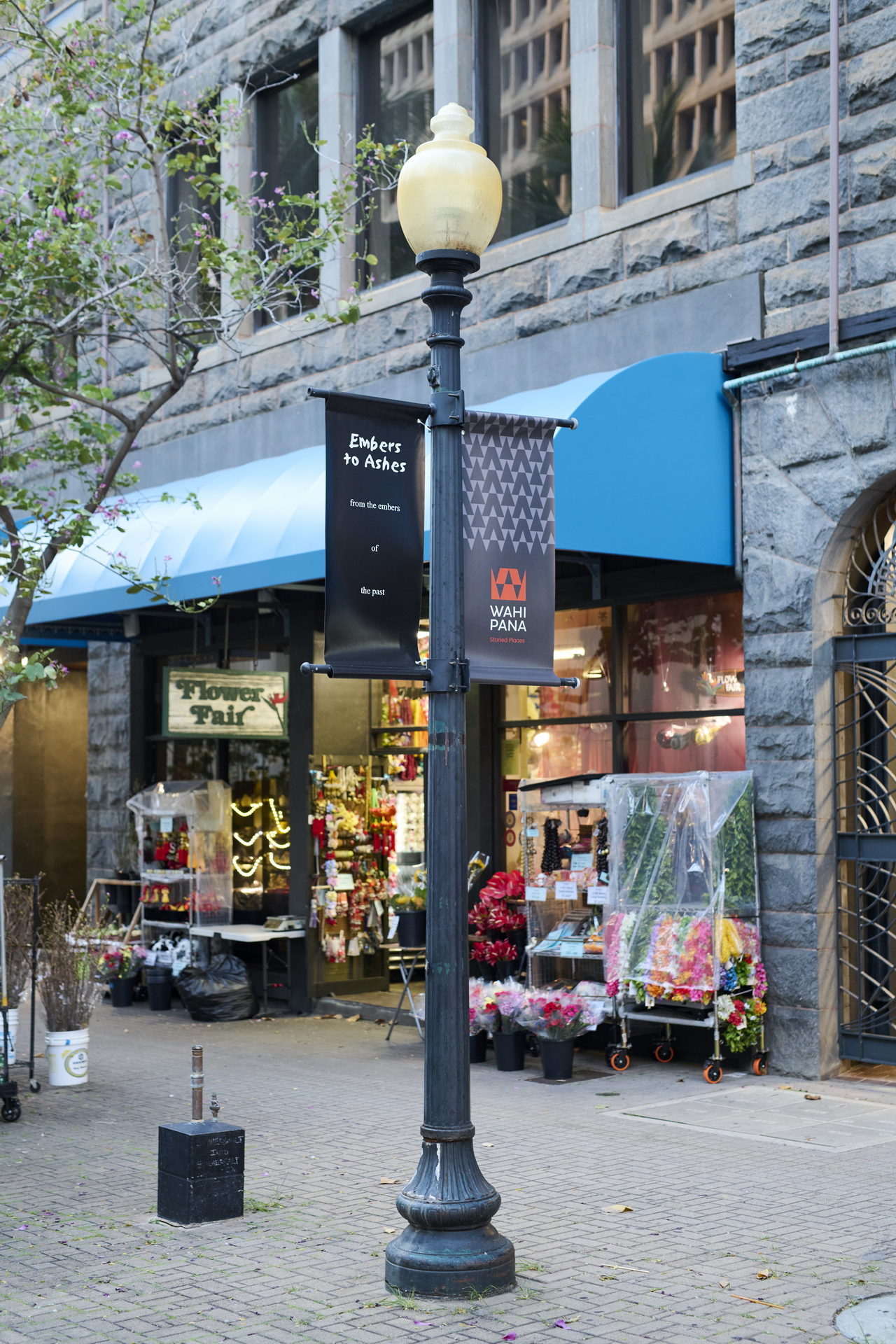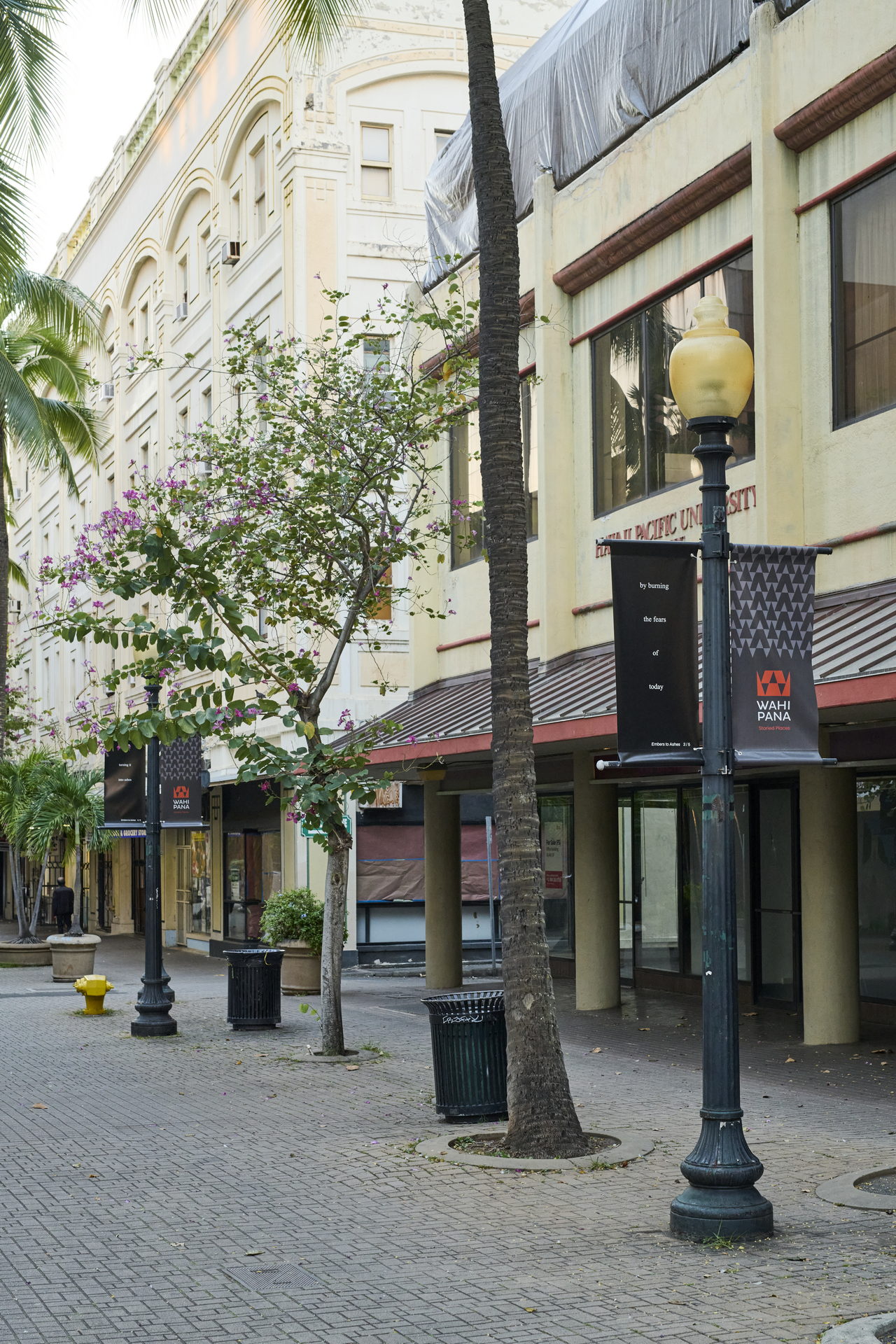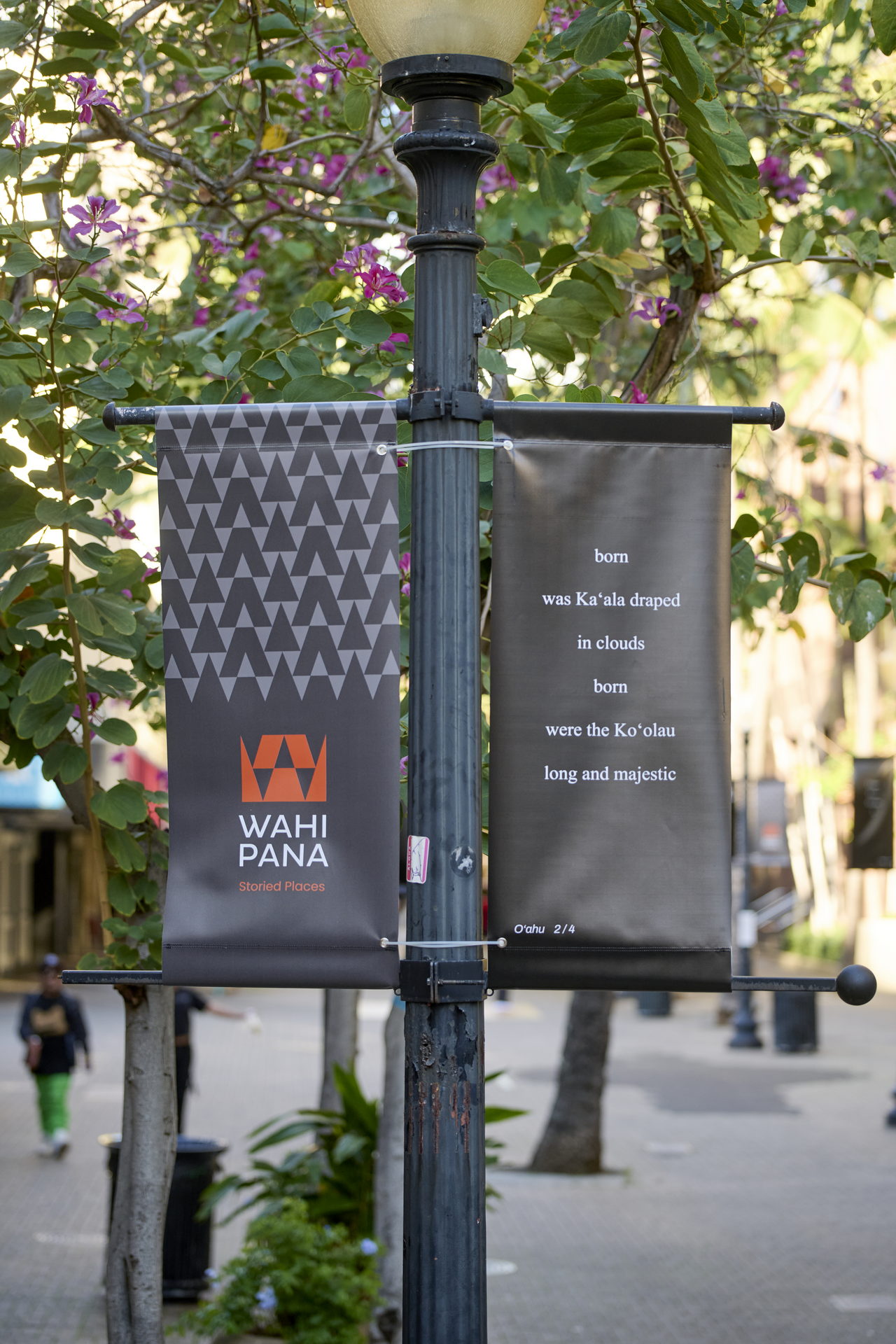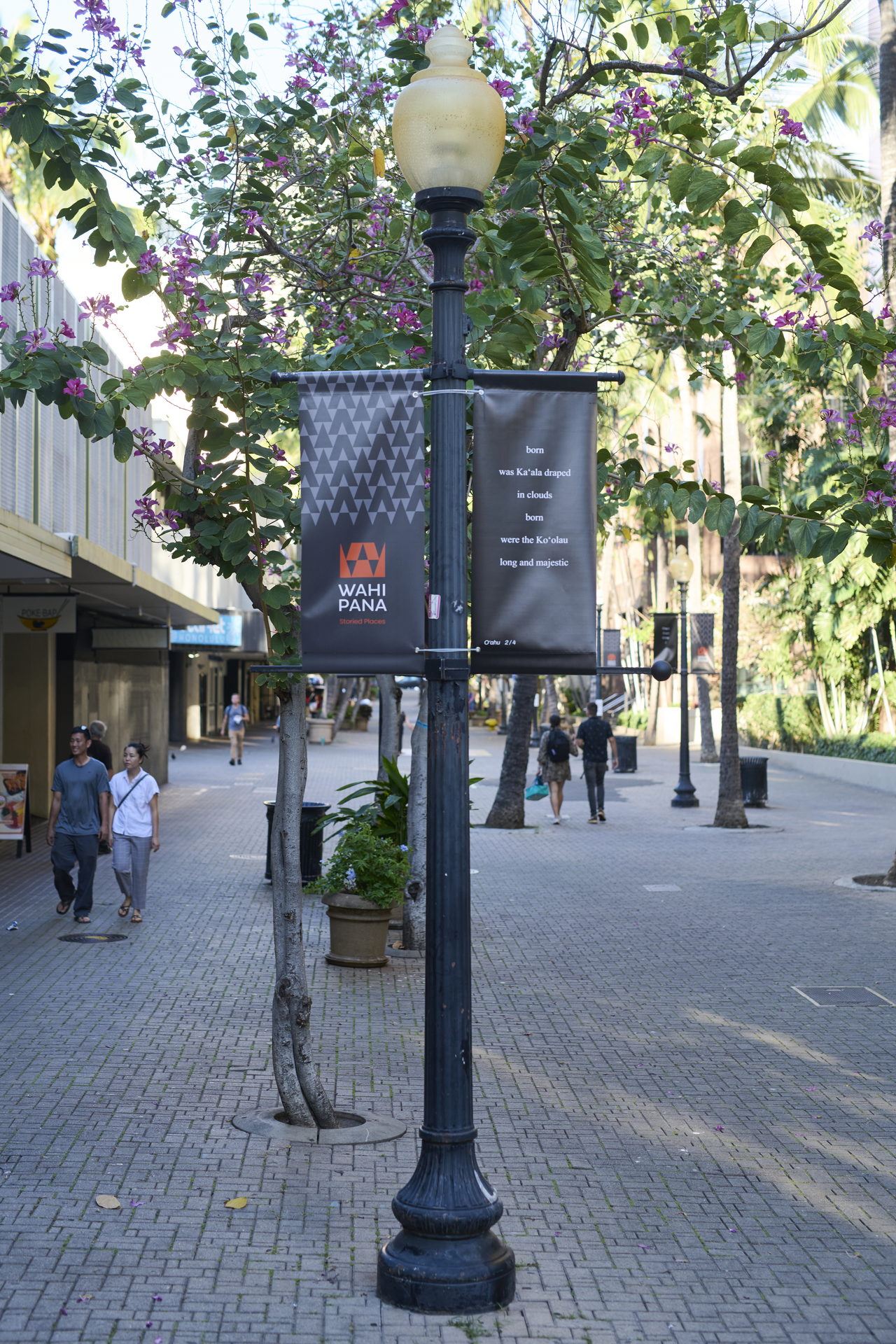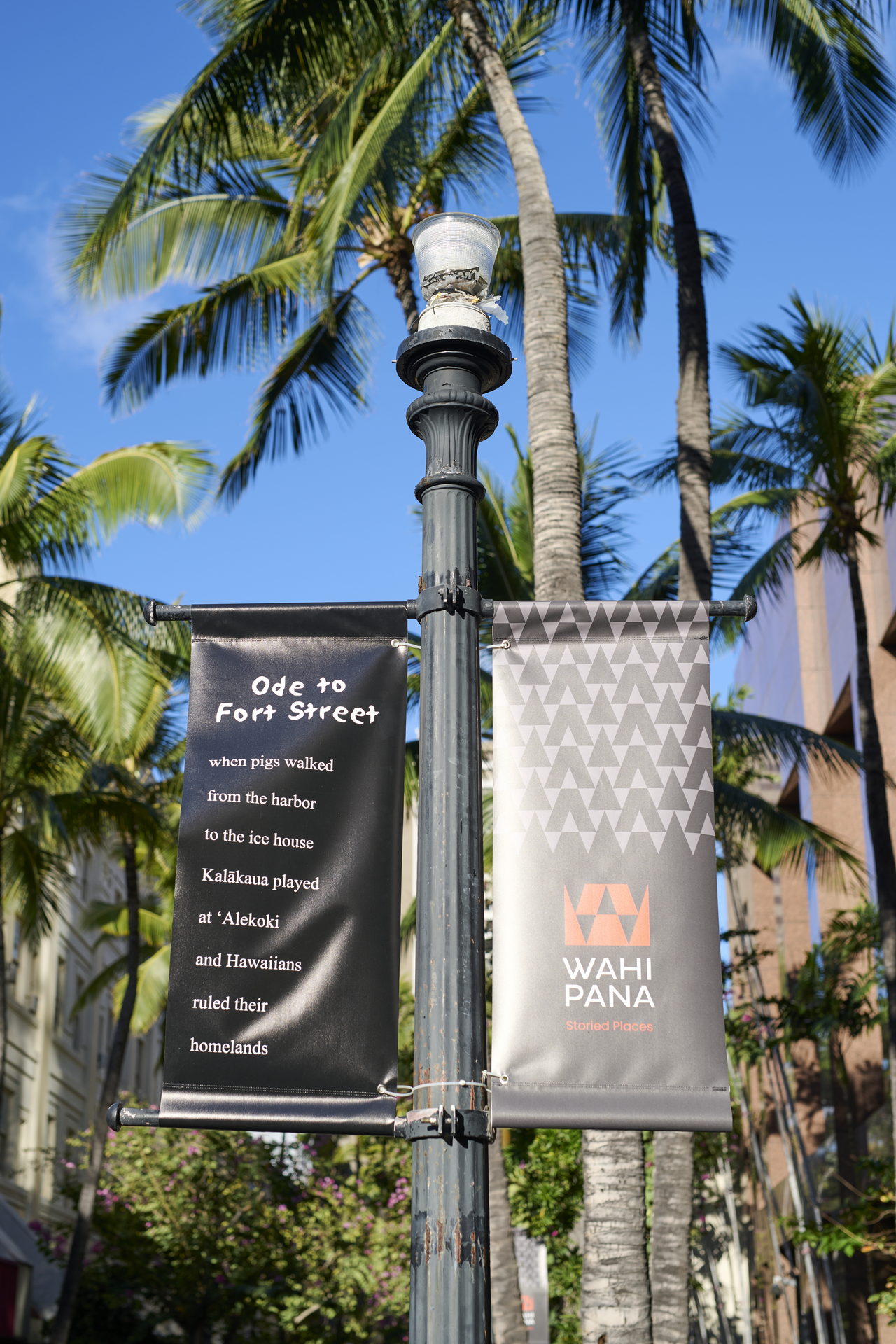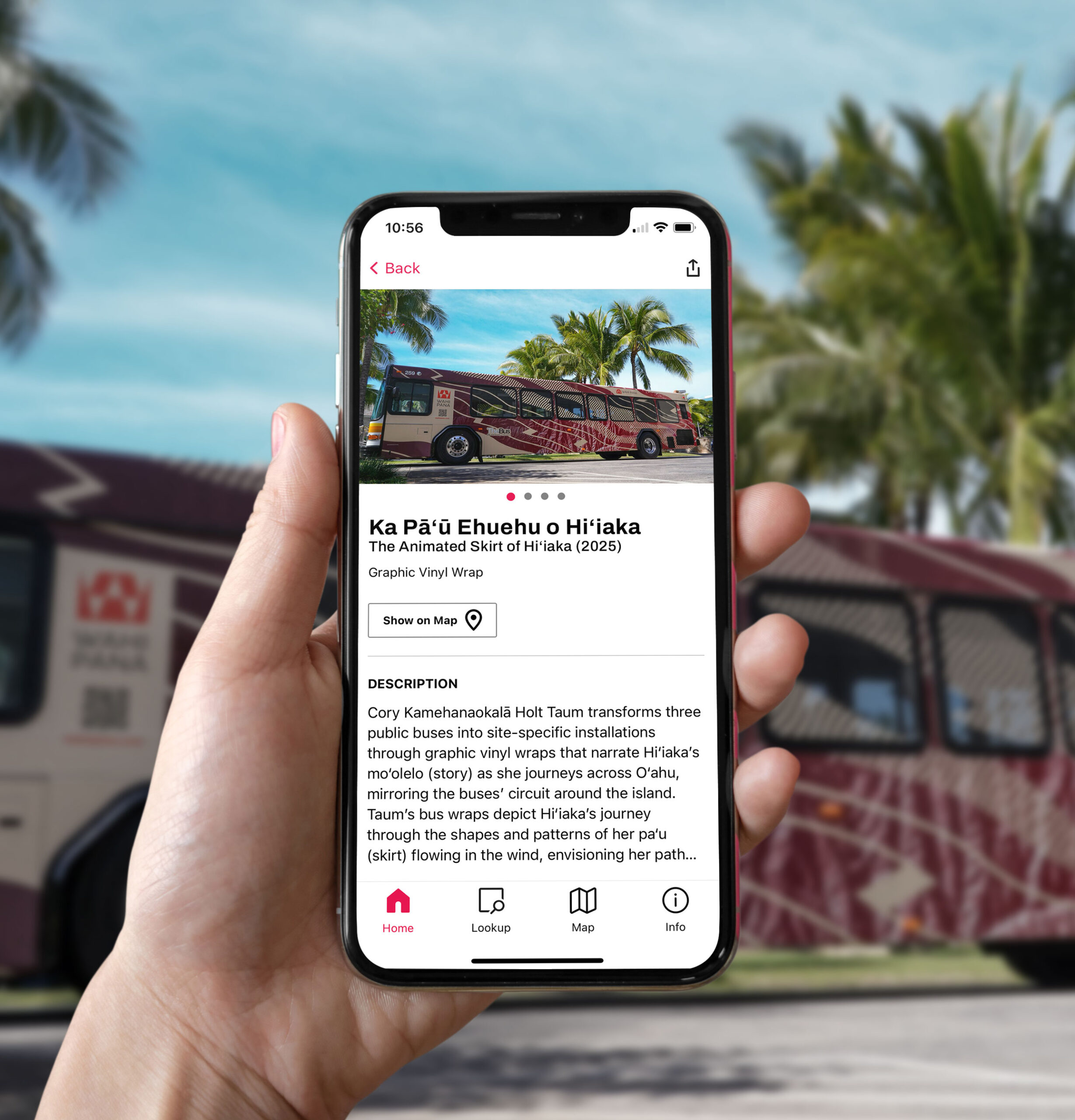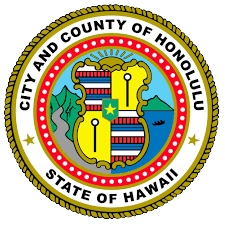ON THIS PAGE
Site: 2
Fort Street Mall
Phase 1: Now Open
Poetry
Title
Select Poems
(2025)
Artist(s)
Imaikalani Kalahele
Site: 2
Fort Street Mall
Phase 1: Now Open
Poetry
Title
Select Poems
(2025)
Artist(s)
Imaikalani Kalahele
Select Poems
(2025)
This installation features a selection of poetry by Imaikalani Kalahele, a Kanaka Maoli poet, artist, and musician, displayed on lamppost banners along Fort Street Mall, from Hotel Street to Beretania Street. Kalahele, who grew up in the Fort Street Mall area during the 1950s, has deep roots in this community. His art and poetry explore themes of place, history, and identity, weaving together contemporary struggles with ancestral knowledge.
Viewed from Hotel St. to Beretania St.
|
Viewed from Beretania St. to Hotel St.
|
Fort Street
Ka‘imina‘auao Kahikina, Daniel Kauwila Mahi
The original name of the Fort Street area was Kou. The intersection of Alakea and Merchant Streets is called Kauanonoula, named after the famous chief Kauanonoula. She enjoyed playing kōnane at Kou, which is where Fort Street is located today. Her kōnane board was crafted from kou wood gathered near Kapiʻolani Park, featuring small squares marked with dog teeth inlays at the corners. This story provides insight into the area’s naming, reflecting the hana leʻaleʻa (pleasurable happenings) of chiefs like Kauanonoula and her male companion, Honokaupu, playing kōnane. The romantic phrase, “Huhuhui aku nā maka i kou,” which means “We will see each other’s faces at Kou,” originates from this context, symbolizing the twisting and torment of love, similar to the Kou tree.
During the time of Kamehameha Paiʻea, Kou referred to all of Honolulu, and the area known today as Fort Street was renamed Kekuanohu, meaning “scorpionfish back.” This name likely arose due to the fort’s appearance, as it was lined with artillery. In 1815, Kamehameha learned of a potential occupation of Kou by a Russian warship, prompting him to send his warriors to confront them. When Kamehameha’s warriors and chiefs arrived, the Russian warship fled to Kaua’i, where they constructed a fort named Hipo at Hanalei and Waimea. Kamehameha’s war general, Kalanimoku, recognized Honolulu’s vulnerability and ordered the construction of Kekuanohu to protect Kou from invasion. It is said that both women and men throughout Oʻahu participated in its construction, with the exception of those from Waimea, who were responsible for delivering timber.
Kekuanohu also served as the residence of the royal governors of the Kingdom for many years. Chief Kekūanāoʻa was the last governor of Oʻahu to live in the fort. In 1857, Kekuanohu was dismantled to extend the street and harbor. Throughout the late 19th and early 20th centuries, Fort Street became a bustling commercial area, home to tailors, photographers, and small businesses. By 1968, Fort Street eventually transformed into a pedestrian mall.
Today, Kou is known as a center of commerce and industry, yet its rich history often goes unrecognized. The Wahi Pana project invites a deeper connection to this storied place, uncovering its many layers of significance—as a site of romance, protection, and trade—restoring its place in the collective memory of Oʻahu.

Imaikalani Kalahele
Imaikalani Kalahele is a Kanaka Maoli poet, artist, and musician who grew up in the Fort Street Mall area in the 1950s. His art and poetry reflect a strong connection to place and history, drawing on contemporary struggles and ancestral knowledge. His work has appeared in anthologies of Native Hawaiian literature, such as Mālama: Hawaiian Land and Water (1985), and in the journal ‘Ōiwi: A Native Hawaiian Journal. Kalahele’s book Kalahele (2002) collected his poetry and art in a polyphonic performance that mixed English, Hawaiian Creole, and ‘Ōlelo Hawai‘i.
Photos:
